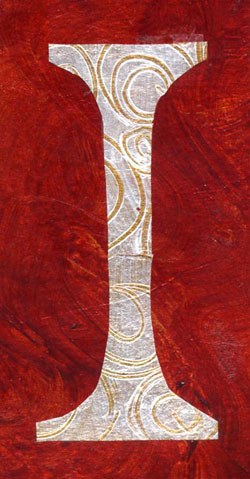 think it was Michelle Brown who first got me pondering the idea of an inner library, which I wrote about on Wednesday. In her book The Lindisfarne Gospels: Society, Spirituality, and the Scribe, Brown makes mention of a painting that appears in the eighth-century Codex Amiatinus. The earliest surviving copy of a complete Bible in Latin, the Codex Amiatinus contains a thought-provoking painting of Ezra, a priest and scribe of the Israelites.
think it was Michelle Brown who first got me pondering the idea of an inner library, which I wrote about on Wednesday. In her book The Lindisfarne Gospels: Society, Spirituality, and the Scribe, Brown makes mention of a painting that appears in the eighth-century Codex Amiatinus. The earliest surviving copy of a complete Bible in Latin, the Codex Amiatinus contains a thought-provoking painting of Ezra, a priest and scribe of the Israelites.
We find the tale of Ezra in the biblical books of Ezra and Nehemiah and also in the books of 1 and 2 Esdras, which are in the Apocrypha. Ezra lived during the time of the Israelites’ exile in Babylonia and was responsible for leading a group of them back home. This priestly scribe had particular renown for his devotion to the law of Moses. 2 Esdras contains a wonderful exchange in which God calls Ezra to rewrite and restore the law that has been destroyed:
Then I answered and said, ‘Let me speak in your presence, Lord. For I will go, as you have commanded me, and I will reprove the people who are now living; but who will warn those who will be born hereafter? For the world lies in darkness, and its inhabitants are without light. For your law has been burned, and so no one knows the things which have been done or will be done by you. If then I have found favor with you, send the holy spirit into me, and I will write everything that has happened in the world from the beginning, the things that were written in your law, so that people may be able to find the path, and that those who want to live in the last days may do so.’ (2 Esdras 14.19-22, NRSV)
I love how the author of 2 Esdras clearly depicts Ezra’s act of writing as a sacred call. Ezra’s remembrance and restoration of the law of Moses is, like the rebuilding of the Temple, an integral part of the reconstruction of the people of Israel.
It is this sacred scribe who appears among the pages of the Codex Amiatinus, laboring over a page as he sits beside a cabinet filled with holy books. (Take a gander at the Ezra painting here.) As with so much medieval art, there’s a lot happening in this image that our 21st-century eyes may not readily read. Michelle Brown places this bookish portrait of Ezra in the wider context of a Celtic monastic tradition that viewed the contemplation, study, and scribing of the scriptures as a way of drawing closer to God. “The act of copying and transmitting the Gospels,” she writes, “was to glimpse the divine and to place oneself in its apostolic service…. As such these books are portals of prayer, during the acts both of making and studying.” (Brown, 398.)
Brown goes on to write,
In an insightful discussion of the Ezra miniature in Ceolfrith’s Codex Amiatinus, Jennifer O’Reilly has drawn attention to the patristic [referring to the early church fathers] concept of the ‘inner library’ and the necessity for each believer to make him or herself a library of the divine Word, a sacred responsibility which Cummian [a seventh-century Irish bishop-theologian] referred to as ‘entering the Sanctuary of God’ by studying and transmitting Scripture. Books are the vessels from which the believer’s ark, or inner library, is filled. They are enablers of direct, contemporary Christian action, channels of the Spirit, and gateways to revelation, for ‘In the beginning was the Word, and the Word was with God, and the Word was God’ (John 1.1). (Brown, 398-9.)
The painted Ezra invites us to cultivate a sacred inner library not merely for the sake of filling our interior shelves, like homeowners who decorate their dwellings with pretty books they have bought by the yard but which they never intend to read. He challenges us instead to fashion a library whose contents inspire and sustain us to embody the Word of God in this world.
What are the books that circulate in your inner library? Within the Bible and beyond it, what texts have opened you to the presence of the God who lingers in their lines? Where have you found words that helped you to read and to create your own life?













January 28, 2008 at 12:30 PM |
Is this another way of talking about one’s worldview? My view of the world comes from my interior life, and it is formed with many texts, most of which have been forgotten over the years. Or is this something else?